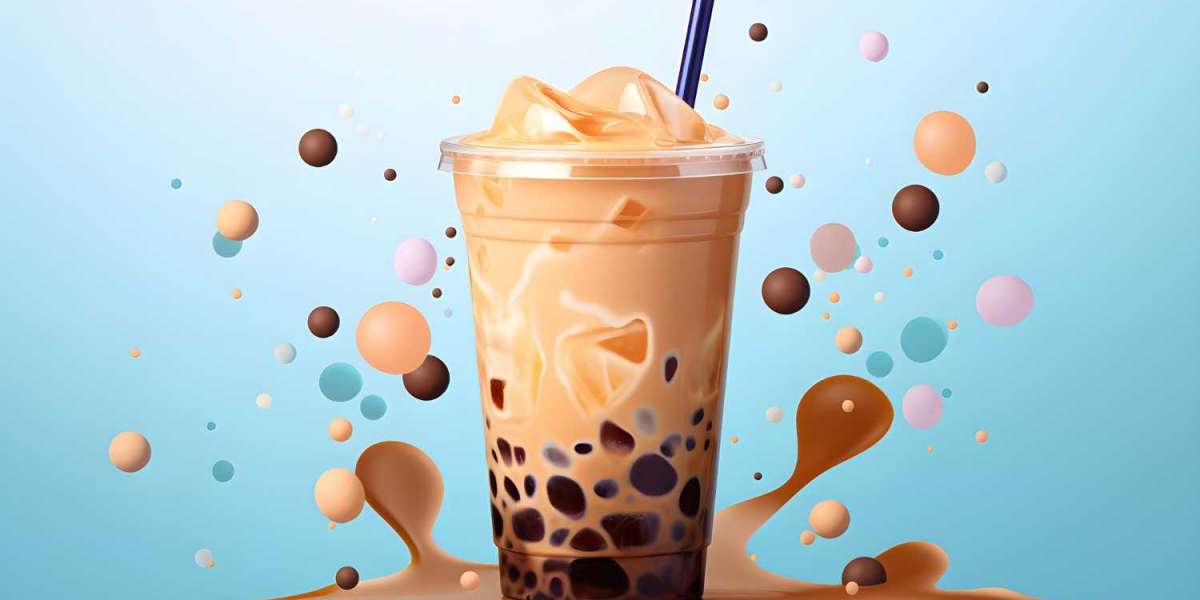What Are Boba Pearls?
Boba pearls, formally known as tapioca pearls, are small spheres made primarily from tapioca starch, which comes from the cassava (cassava root) plant. When mixed with boiling water and sugar, the starch forms a gel‑like dough that can be shaped into pearls. Though initially flavorless, they acquire sweetness and color typically deep brown or black by soaking or cooking in brown sugar or caramel syrup. Their distinctive “QQ” texture a Taiwanese term meaning pleasantly chewy makes them the heart and soul of bubble tea.
A Taste of History
These chewy pearls trace their origins back to Southeast Asia, where traditional desserts used pearls made from starches like sago . After cassava (a starch-rich root from South America) was introduced during the colonial period, tapioca pearls emerged as an economical alternative to sago. It was in Taiwan during the 1980s that tapioca pearls were added to milk tea, giving birth to bubble tea. The name “boba” is Taiwan vernacular that initially referred to the round pearls and later came to represent the entire drink.
The Science Behind the Chew
Creating that iconic chewy texture comes from starch gelatinization when heat and water cause starch molecules to swell and solidify. Precise cooking is key: undercook, and the core stays hard; overcook, and the pearls turn mushy. The ideal balance leaves them soft yet firm inside (“QQ”). After boiling, they’re rinsed in cold water to prevent sticking, then typically soaked in a sugar syrup to lock in sweetness and prevent them from clumping.
Homemade vs. Store‑Bought Pearl
Making boba at home has grown in popularity. A simple recipe blends tapioca starch, water, and sugar boil to form a dough, shape into balls, then cook and soak in syrup. Variations include flavored or colored pearls, using additions like matcha, cocoa, or fruit powder . Home crafters can also dry or freeze pearls for longer storage.While homemade pearls offer customization and freshness, commercially produced ones excel in consistency and convenience—but may include additives to maintain texture and shelf life .
Types of Boba Pearls
Beyond classic black pearls, a vibrant world awaits:
Clear/White pearls: Made without coloring, often used in fruit teas.
Flavored pearls: Infused with ingredients like matcha, fruit powder, or cocoa.
Mini boba: Smaller, offering subtler texture bursts.
Popping boba: Technologically crafted via spherification—thin skins encapsulating juice that “pop” when bitten. Common in fruity drinks.
Each type brings its own charm: chewy, flavorful, delicate, or explosively juicy.
Tips for Perfect Pearls Every Time
Use ample water – Typically 5–7 parts water per 1 part dried pearls.
Stir continually during boiling to avoid sticking or uneven cooking.
Follow the “30 30” method for dried pearls: cook 30 minutes, rest in the same pot another 30 minutes.
Rinse pearls in cold water immediately after cooking to halt the process and separate them .
Sweeten in syrup – After cooking, simmer pearls in brown sugar or flavored syrup to infuse sweetness and prevent sticking .
Store thoughtfully – Dried pearls last months; fresh can be frozen; cooked last best when warm in syrup and consumed within hours or a day.
Why Boba Pearls Matter
Bubble tea’s global appeal owes much to boba pearls. They transform an ordinary drink into an experience—fun, playful, and satisfying. Whether slurping chewy black pearls or biting into bursting fruit spheres, the sensory joy is undeniable. Convenience and creativity combine: pearls pair with various tea types, milks (dairy or plant-based), and syrups, fitting countless flavor profiles and dietary needs .
The rise of next-generation boba blends—including artisanal teas with high-quality syrups and homemade pearls—reflects the continuing evolution and cultural richness of this drink .
Final Sip: Boba Beyond the Tea
Boba pearls belong to a broader culinary movement: creative spheres in dishes and drinks. From vegan caviar to balsamic pearls, chefs are celebrating the playful textural surprise bubbles bring. But for many, the classic tapioca pearl will always reign supreme timeless, tactile, and eternally chewy.
In Conclusion
Boba pearls are more than just add-ons—they define bubble tea. With roots in traditional Southeast Asian desserts and transformation through Taiwanese innovation, they offer textural delight, flavor versatility, and a global cultural footprint. Whether you're a tea purist or flavor adventurer, understanding these pearls unlocks the full magic of bubble tea—one chew at a time.




